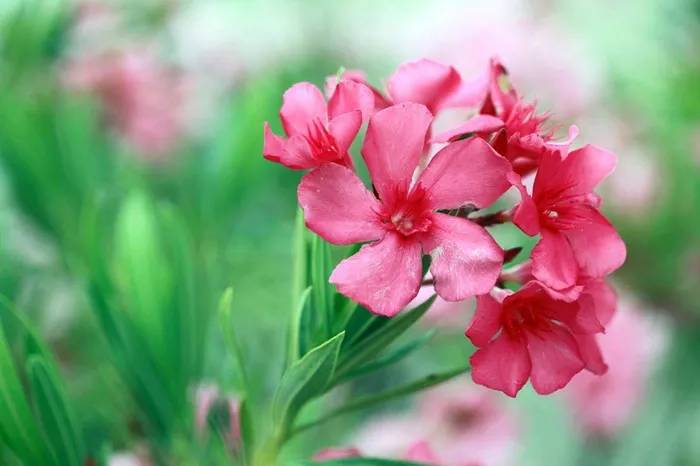The world of gardening is a treasure trove of diverse and enchanting flora. Among the myriad of flowers that grace our gardens, the arali flower stands out with its unique beauty and intriguing characteristics. Known by various names across different cultures, this flower has captured the hearts of gardening enthusiasts and nature lovers alike. In this article, we will delve into the fascinating world of the arali flower, exploring its English name, origins, and the many ways it enhances our gardens and lives.
What Is Arali Flower Called In English?
The Arali Flower: A Multifaceted Beauty
The arali flower, scientifically known as Aralia elata, is a captivating plant that belongs to the Araliaceae family. Native to East Asia, it has long been revered for its ornamental value and medicinal properties. In English, it is commonly referred to as the “Japanese Angelica Tree” or simply “Aralia.” This name reflects its origins and the angelic appearance of its delicate flowers and foliage.
A Journey Through Origins and Names
To truly appreciate the arali flower, it is essential to understand its origins. The Japanese Angelica Tree is native to regions such as Japan, Korea, and northeastern China. Its natural habitat includes mountainous areas and forests, where it thrives in well-drained soil and partial shade. Over time, this plant has been introduced to gardens around the world, becoming a beloved addition to landscapes and floral arrangements.
In different cultures, the arali flower has been given various names that reflect its unique characteristics. For instance, in Japan, it is known as “mitsumata,” which translates to “three-forked” due to the shape of its branches. In Korea, it is called “doksan,” highlighting its medicinal uses. These names not only reveal the plant’s cultural significance but also add to its allure for gardeners and botanists.
The Allure of the Japanese Angelica Tree
The Japanese Angelica Tree is a deciduous shrub or small tree that can grow up to 20 feet tall. Its most striking feature is the large, compound leaves that create a lush canopy. These leaves are deeply divided and have a fern-like appearance, adding a touch of elegance to any garden. In late summer, the tree produces clusters of small, white flowers that resemble lace. These flowers are not only beautiful but also attract a variety of pollinators, including bees and butterflies.
One of the most fascinating aspects of the arali flower is its adaptability. It can thrive in a range of climates and soil conditions, making it an excellent choice for gardeners in different regions. Whether planted in a woodland garden or a more formal setting, the Japanese Angelica Tree adds a sense of tranquility and natural beauty.
Cultivating the Arali Flower
Growing the arali flower is a rewarding experience for gardeners of all levels. It prefers well-drained soil and partial to full sun, making it suitable for a variety of garden environments. When planting, it is important to choose a location that provides some protection from strong winds, as its delicate branches can be easily damaged.
One of the key factors in successfully growing the Japanese Angelica Tree is proper watering. While it enjoys consistent moisture, it is crucial to avoid waterlogging, as this can lead to root rot. Mulching around the base of the plant can help retain moisture and regulate soil temperature.
Pruning is another important aspect of caring for the arali flower. Regular trimming can help maintain its shape and promote healthy growth. It is best to prune in late winter or early spring, before new growth begins. Removing dead or damaged branches will also ensure that the plant remains vibrant and healthy.
Medicinal and Culinary Uses
Beyond its ornamental value, the Japanese Angelica Tree has a long history of medicinal and culinary uses. In traditional medicine, various parts of the plant have been used to treat a range of ailments. The roots and bark are known for their anti-inflammatory and analgesic properties, making them useful in treating conditions such as arthritis and joint pain.
In the culinary world, the young shoots of the arali flower are considered a delicacy in some cultures. They can be harvested in early spring and prepared in a variety of ways, including boiling, frying, or pickling. The shoots have a unique, slightly bitter taste that adds a distinctive flavor to dishes.
Incorporating the Arali Flower into Your Garden
The Japanese Angelica Tree is a versatile plant that can be incorporated into various garden designs. Its elegant foliage and delicate flowers make it an excellent choice for creating a serene and naturalistic landscape. It can be planted as a standalone specimen or used to create a lush understory in a woodland garden.
When designing with the arali flower, consider pairing it with other plants that share similar growing conditions. Ferns, hostas, and other shade-loving perennials can complement its fern-like leaves and create a harmonious garden scene. Additionally, the arali flower’s ability to attract pollinators makes it a valuable addition to any garden focused on supporting local wildlife.
Conclusion
The arali flower, or Japanese Angelica Tree, is a true gem in the world of gardening. With its captivating beauty, adaptability, and rich cultural history, it offers something for everyone. Whether you are a seasoned gardener or a beginner, this plant is sure to enhance your garden and bring a touch of natural elegance to your outdoor space. So why not consider adding the arali flower to your garden and experience its enchanting allure for yourself?


